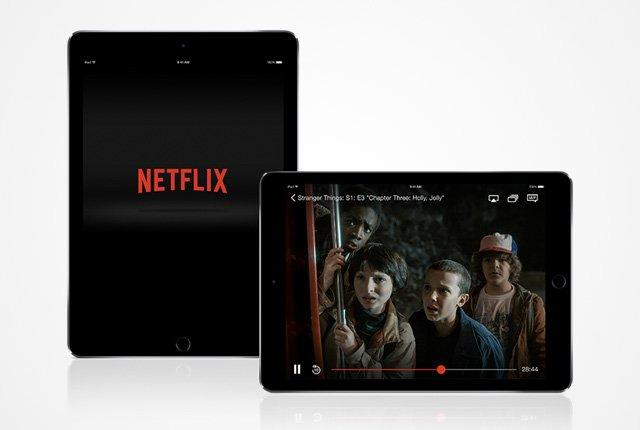
Netflix recently confirmed that it is testing two new mobile subscription plans in South Africa.
These platforms are called Netflix Mobile and Mobile+ and are priced at R39 and R59 per month, respectively.
Each offers a similar set of features, including support for a single simultaneous stream, 480p streaming quality, and support for smartphones and tablets.
The only difference between the two services is that the Mobile+ plan also supports streaming on a laptop or desktop device.
If you were to visit the Netflix signup page to try out of these new packages, however, you would not see both available as an option.
Instead, you would see either the Mobile or Mobile+ plan in addition to the Basic, Standard, and Premium plans, or neither may not appear at all if you are especially unlucky.
This behaviour is a product of Netflix’s testing process, with the company stating that the new plans may become widely available if it proves successful.
“We’ve had the same three plans for several years now and this test offer reflects significant usage of and preference for mobile in South Africa,” Netflix told MyBroadband.
“We’ll only roll this out longer-term if people value the increased flexibility.”
Netflix has offered only the Basic, Standard, and Premium plans for over five years locally, and in that time its membership base has changed significantly, with mobile usage continuing to increase.
Egypt and South Africa were the first countries in Africa in which Netflix began testing the Mobile subscription plan, and this testing has expanded to become more widely accessible over time.
The rollout and the success of these features are informed by the thorough A/B testing performed by Netflix engineers.
How Netflix tests work
Every product change implemented by Netflix goes through an A/B testing process before it becomes the default user experience.
This is true for everything from major redesigns to new subscription plans and video quality changes.
“By following an empirical approach, we ensure that product changes are not driven by the most opinionated and vocal Netflix employees, but instead by actual data, allowing our members themselves to guide us toward the experiences they love,” Netflix explains.
The main concept of this type of testing is to create a control group and one or more experimental groups that receive alternative treatments.
Netflix calls these experimental groups cells, and it is the users in these groups that are pushed experimental features.
“As soon as the test is live, we track specific metrics of importance, typically (but not always) streaming hours and retention,” Netflix said.
“Once we have enough participants to draw statistically meaningful conclusions, we can get a read on the efficacy of each test cell and hopefully find a winner.”
Why you can’t get see it
Each Netflix user is usually part of several A/B tests at any given time, provided that none of the tests conflicts with another.
They are assigned to these groups either as a result of real-time interactions or by batch commands.
It is for this reason that Netflix’s new Mobile and Mobile+ plans are not available to everybody.
If you are part of the A/B testing cell which is pushed the Mobile subscription option, that is exactly what you will see in the signup screen.
The same is true for users in the Mobile+ testing cell.
Netflix users in the “default” testing cell will not receive the option at all and may have to wait for it to roll out publicly to sign up.
However, if the testing cell is assigned randomly upon loading of the Netflix signup page, it may be possible to continuously reload the page from different browsers and devices to access these plans.


